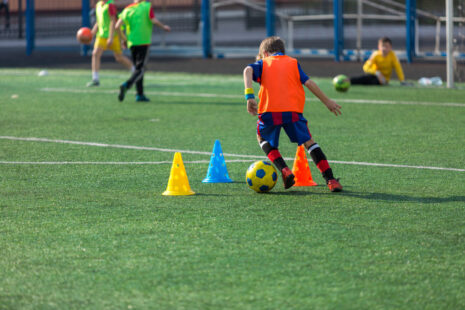Soccer players usually include conditioning exercises in their training routine 2-3 times weekly to boost their fitness and performance.
The frequency and intensity of these sessions can be adjusted based on several factors…
- Individual Fitness Level – Players with higher fitness levels may opt for more frequent conditioning sessions to maintain their peak physical condition. Conversely, those who are less conditioned or returning from injury may start with fewer sessions per week and gradually increase as they progress.
- Training Goals – The specific goals of the conditioning program can influence frequency. For example, during the off-season or pre-season, players may engage in more frequent conditioning sessions to build endurance, strength, and speed. During the competitive season, the focus may shift to maintaining fitness levels while minimizing fatigue and injury risk.
- Competition Schedule – The frequency of conditioning sessions may also be adjusted based on the team’s competition schedule. During weeks with fewer matches or lighter training loads, players may have more opportunities for conditioning work. Conversely, during congested fixture periods or busy training weeks, conditioning sessions may be reduced or modified to prioritize recovery and match readiness.
- Recovery and Periodization – Proper recovery is essential for optimizing the benefits of conditioning training and reducing the risk of overuse injuries. Players should incorporate rest days and active recovery strategies into their weekly schedule to allow the body to adapt and repair from training stress. Also, coaches may implement periodization principles to vary the intensity and volume of conditioning work throughout the season, ensuring optimal performance during key matches and periods of peak competition.
- Individual Needs and Preferences – Finally, conditioning programs should be tailored to individual player needs, preferences, and positions on the field. For example, goalkeepers may focus more on explosive power and agility training, while outfield players may prioritize endurance and speed development. Also, players may have personal preferences regarding the types of conditioning activities they enjoy and respond best to, such as interval training, plyometrics, or strength training.
By considering these factors and working closely with coaches and fitness professionals, soccer players can develop a comprehensive conditioning program that supports their performance goals and overall well-being throughout the season.



